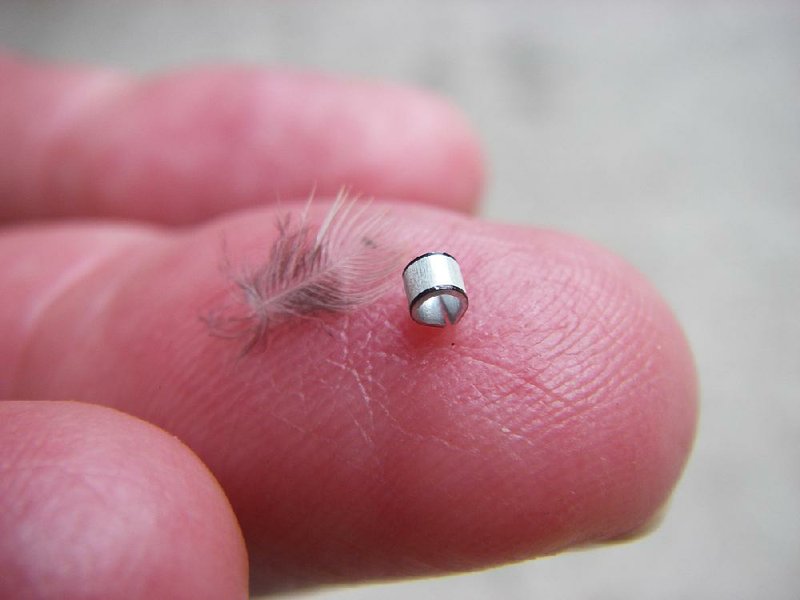A popular hummingbird hangout is the Potlatch Conservation Education Center at Cook's Lake, about 18 miles east of Stuttgart.
They like to visit the 18 feeders filled daily with five gallons of sugar water. They don't seem to mind that every once in a while, one is caught and banded for federal research.
In a reoccurring educational program at the center, Tana Beasley of the Arkansas Game and Fish Commission demonstrates hummingbird banding. Beasley, the center's facility manager, said she is the state's only federally licensed hummingbird master bander.
The free program requires reservations and it's already completely booked for today, July 19 and Aug. 16. Another program was added for Sept. 6. Call (870) 241-3373 to register.
Beasley said she was trained by master bander Bob Sargent of Clay, Ala., and banded her first bird in 2009. Banding at Cook's Lake began as a way to learn more about visiting hummingbirds.
"What we have found is that primarily the birds that we check in the spring, we do not see them in the fall," Beasley said. "And the ones that we see and band and check in the fall, we do not see them in the spring. ... What goes up, comes back down somewhere else."
To catch a hummingbird, a feeder is put inside a cage with an open door. The bird flies in and is caught. The captured bird is put inside a nylon stocking to restrain it while it is quickly banded, weighed and measured. Then it is freed. The information about the bird is reported to the banding program laboratory in Maryland.
A hummingbird band is 5.6mm long -- less than a quarter inch -- and 5,500 of them weigh an ounce, Beasley said. It's put on with needle-nose pliers modified to ensure the band doesn't squeeze the bird's leg.
"We've been able to trace back at least 75 years here, of people that we've talked to, that have observed high numbers of hummingbirds going through this region," Beasley said.
The first northbound birds typically arrive April 2 at Cook's Lake, while it's rare to see a bird after Nov. 2, Beasley said.
"That's another thing that a lot of banding has brought out is that a bird will come to his area on approximately the same day every year. He's got a little timetable and if you don't have the feeder out, he'll circle around where that feeder was, and he'll come to the window and look in like, 'Hey, get up and get out here,'" she said.
Many springtime travelers go as far north as Canada, but some stay in the area to breed.
What's the attraction to staying in the area? Trees for cover and building nests, wildflowers for nectar, plenty of insects and a source of water.
"About 50 percent of our birds will have a band," she said. "We had one little male one year that we caught him 11 times, so obviously he stayed here all summer. That's how we determine if we have resident ones, because we'll keep catching them."
A female builds a small nest to hold her clutch of two eggs and then disguises it. She'll have two clutches a year.
"We've never found a nest here. We know they're here," she said. "It's going to look like a little knot on the log."
Ruby-throats are the only documented hummingbird visitors to the center. Beasley verified a rufous hummingbird three or four miles away in January, she said. She leaves a feeder out during the off-season, ever hopeful that one winter day, the center will be able to record a visit by one of the other kinds of hummingbirds.
The North American Bird Banding Program is run by the U.S. Geological Survey and the Canadian Wildlife Service. The band -- a metal strip with a number -- goes on a bird's leg. If the bird is recaptured, its number can be reported to the program. Using this information, researchers can learn more about birds -- their movements, habits, survival and lifespan.
For more information or to report a banded bird, go to: pwrc.usgs.gov/bbl/.
HomeStyle on 06/28/2014
